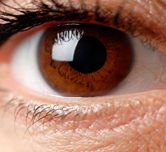
Silicone oil is a manmade synthetic substance composed of repeating units of siloxane (Si-O).

Optomap (Optos) widefield fundus photo and OCT images of silicone oil tamponade for an inferior retinal detachment with associated PVR, preoperatively (A) and postoperatively (B). Schedule a consultation with an eye doctor to learn more about how you can ensure a healthy recovery following your surgery.Figure 1. If this is the case, contact your doctor immediately to review your options. If you experience symptoms such as sudden floaters and flashes after surgery, it may mean that your retinal detachment surgery was not effective. Some patients may also need a second surgery to ensure the best results. With proper aftercare, between 80 and 90 percent of retinal detachment surgeries are successful.
#AFTER RETINA SURGERY FULL#
You can resume these actions and a full range of activities once your doctor gives you proper clearance. Flying: If you were treated using pneumatic retinopexy, you should avoid flying as the change in air pressure can affect the bubble of gas which was placed in your eye.Television and reading: Avoid these activities in excess, as they can strain your eyes.

Blood thinners: If you are taking medications such as blood thinners or aspirin, be sure to consult with your doctor.Rubbing or touching your eye: These actions can introduce harmful, infection-causing bacteria to your eye.Strenuous activity: In addition to avoiding sudden movements, you should refrain from exercise and other activities which require moving the head, including gardening.Habits and Activities to Avoidĭuring the recovery period, there are several habits you should avoid to reduce the risk of infection or damage to your eye. However, for some patients, vision loss can never be fully restored even if they have a smooth recovery. If your retinal detachment resulted in vision loss, sometimes it can be restored with surgery. It is important to maintain realistic expectations during this time. Positioning: If pneumatic retinopexy was used to reattach your retina, your doctor may instruct you to keep your head carefully positioned (face down, for example) for a certain amount of time.It is especially important that you wear this while you sleep. Eye patch: You will be given an eye shield to protect your eye from rubbing or scratching.Medication: Your doctor will prescribe antibiotic eye drops to reduce the risk of infection following surgery.Ensuring a Healthy RecoveryĪntibiotics, protective eyewear, and proper posture are important contributing factors for a healthy recovery: With proper aftercare, between 80 and 90 percent of retinal detachment surgeries are successful. In general, the more severe the detachment or tear is, the less likely your vision is to return quickly.

Many patients are not able to see clearly or drive following retinal detachment surgery, so it is important that you arrange for the appropriate time off of work if necessary.ĭepending on the severity of your retinal detachment, it can take several months for your vision to improve after surgery. During this time, your doctor will schedule regular visits to evaluate your progress. It will take approximately two to four weeks for your retina to fully recover after surgery.

Surgery for retinal detachment is typically an outpatient procedure, allowing you to go home on the same day as your treatment.


 0 kommentar(er)
0 kommentar(er)
